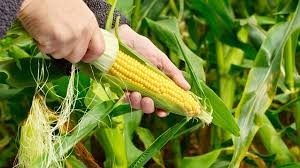Genetically Modified (GM) Crops: A Comprehensive Overview
Syllabus:
GS – 3 – GM Crops , food security , Achieving sustainable development goals
Focus :
This article examines genetically modified (GM) crops as a solution to global food security challenges. It highlights their benefits, including increased yields, reduced pesticide use, and enhanced nutrition, while addressing concerns such as ecological risks, high costs, and public skepticism. It emphasizes the role of innovative tools like CRISPR, regulatory frameworks, and equitable access strategies to ensure sustainable and responsible use of GM technology in agriculture.
Introduction to GM Crops
- Genetically Modified (GM) crops involve altering the genetic material of plants to enhance specific traits, such as resistance to pests, improved yield, or tolerance to adverse environmental conditions.
Methods of Modification
- Tools like CRISPR (Clustered Regularly Interspaced Short Palindromic Repeats) allow precise genetic modifications without introducing foreign genes, increasing public acceptance.
- Earlier methods relied on introducing genes from different organisms, such as bacteria, to achieve the desired results.
Potential Benefits of GM Crops
a. Enhanced Food Security
- With a rapidly growing global population, GM crops could be key to ensuring food availability without expanding agricultural land.
- Modified crops like Bt cotton and Golden Rice have demonstrated significant productivity gains.
b. Reduced Dependency on Chemicals
- Crops like Bt cotton produce proteins toxic to specific pests, reducing pesticide usage.
- Herbicide Tolerance: Some GM crops can survive broad-spectrum herbicides, simplifying weed management.
c. Nutritional Improvements
- Biofortification, such as adding vitamin A to rice (Golden Rice), addresses malnutrition in developing countries.
d. Environmental Sustainability
- Reduced pesticide and herbicide use lead to fewer chemical residues in the soil and water.
- Drought-resistant varieties minimize water consumption.
Challenges and Concerns
a. High Development Costs
- Developing and commercializing GM crops is expensive, requiring rigorous safety testing and regulatory approvals.
- Non-profit institutions often struggle to fund these processes.
b. Ecological Risks
- Over-reliance on GM crops can lead to the evolution of resistant weeds and pests, necessitating stronger chemicals.
- Widespread monoculture of GM crops may reduce genetic diversity.
c. Socio-Economic Impacts
- Dependence on proprietary seeds from large corporations increases costs for farmers.
- Marginalized farmers may struggle to adopt these technologies, widening inequalities.
d. Public Perception and Ethical Issues
- Skepticism towards GM crops persists due to concerns about long-term health effects and environmental impact.
- Cultural and ethical objections arise, especially in regions wary of biotechnology.
Case Studies of GM Crop Successes
a. Bt Cotton in India
- Incorporation of a gene from Bacillus thuringiensis enables the crop to produce proteins toxic to bollworms.
- Impact:Reduced pesticide use by 40–50%.Increased cotton yields, contributing significantly to the textile industry.
b. Golden Rice in Bangladesh
- Address Vitamin A deficiency by adding genes that enable rice to produce beta-carotene.
- Challenges: Regulatory hurdles and public skepticism have slowed adoption.
Emerging GM Crop Technologies
CRISPR-Based Crops
- Enables precise, targeted edits without foreign DNA.
- Examples include drought-resistant maize and blight-resistant potatoes.
Herbicide-Resistant Varieties
- New modifications allow resistance to more herbicides, aiding weed control.
- However, overuse could result in herbicide-resistant superweeds.
Regulatory and Policy Frameworks
International
- Cartagena Protocol: Regulates transboundary movement of GMOs.
- Codex Alimentarius: Provides guidelines for assessing food safety.
India’s Policy
- Genetic Engineering Appraisal Committee (GEAC): Oversees GM crop approvals.
- Regulatory delays and public opposition often hinder commercialization.
Strategies to Enhance Acceptance and Usage
Research and Development
- Focus on crops with direct consumer benefits, such as enhanced nutrition.
- Reduce costs by streamlining regulatory processes.
Transparent Communication
- Educate the public about the science, safety, and benefits of GM crops.
- Address misinformation through targeted campaigns.
Support for Farmers
- Subsidies and training programs to ensure equitable access.
- Promote sustainable farming practices to mitigate ecological risks.
Conclusion
- GM crops offer a promising solution to address global challenges like food security, malnutrition, and environmental degradation.
- However, careful management of risks, transparent regulations, and equitable access are crucial to unlocking their potential.
- Balancing innovation with ethical considerations and public trust will determine the future of GM crops in ensuring sustainable agriculture.
Associated Article
https://universalinstitutions.com/contested-harvest-the-debate-on-gm-crops-in-india/
Mains UPSC Question GS 3
Discuss the role of genetically modified (GM) crops in ensuring food security and sustainable agriculture. Highlight the challenges and ethical considerations associated with their adoption in India.”(250 words).





